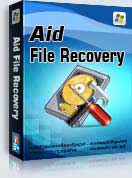Windows 10 not assigning a drive letter to an old Win7 formatted HDD in Windows 10/Windows 7/Windows 8/Windows 8.1/Windows XP PC, best format recovery software help you recover MS word,excel, pictures, music, video files from Windows 10 not assigning a drive letter to an old Win7 formatted HDD
Use "unformat" to recover formatted drive for " Windows 10 not assigning a drive letter to an old Win7 formatted HDD " after quick format,full format,accidentally formatted,reformatting,High-level formatting,Low-level formatting.
Use "recover partition" to recover files - Windows 10 not assigning a drive letter to an old Win7 formatted HDD partition,lost partition,changed ,damaged partition.And if the size or position of partition is changed by format,It can not recover with "unformat"so you can use "recover partition"mode.
Use "undelete" to recover deleted files - Windows 10 not assigning a drive letter to an old Win7 formatted HDD after Virus attack,Recycle bin clear,disk cleanup,Press shift del by mistake,permanently empty recycle bin,shift delete ,accidentally deleted by a mistake.
Use "Full Scan" to recover data - Windows 10 not assigning a drive letter to an old Win7 formatted HDD which can not be found with "undelete" and "unformat" and "recover partition",after showing an error,display as raw file system,unformatted,unknown partition,unpartitioned,needs to be formatted,or the file system is not exfat,not fat32,not ntfs.
"Windows 10 not assigning a drive letter to an old Win7 formatted HDD", I've built a new desktop Windows 10 PC The machine is up and running nicely. Actually the fastest and easiest build I've ever done. Not quite sure why I sorted out Windows 10 on my new laptop and with CLASSIC SHELL installed I'm pretty happy with the operating system. Now it's time to move the DATA hard disk drive from my old Windows 7 Home desktop unit over into the new machine. It's a WD 160 GB drive with about 38 GB of files so I see no reason not to just put it in the new machine. Problem is that when I connect it to the new machine via SATA the BIOS and Windows DRIVE MANAGEMENT see the HDD but almost all options for assigning a drive letter are grayed out. I believe the only right click option active in the DISK MANAGEMENT window is DELETE VOLUME. Is this an issue of Windows 10 not being able to read an win7 formatted drive? Or do you think there will be some way I'll be able to get this hard drive recognized by Windows 10. There are alternatives of course like copying the old drive to a new blank Windows 10 formatted drive by going through the network.
Formatting a disk for use by an operating system and its applications typically involves three different processes.High-level formatting is the process of setting up an empty file system on a disk partition or logical volume and, for PCs, installing a boot sector. This is a fast operation, and is sometimes referred to as quick formatting. Reformatting often carries the implication that the operating system and all other software will be reinstalled after the format is complete. Rather than fixing an installation suffering from malfunction or security compromise, it may be necessary to simply reformat everything and start from scratch. Various colloquialisms exist for this process, such as "wipe and reload", "nuke and pave", "reimage", etc. Sometimes, data present in the physical drives (Internal/External Hard disk, Pen Drive, etc.) gets lost, deleted and formatted due to circumstances like virus attack, accidental deletion or accidental use of SHIFT+DELETE. In these cases, data recovery software are used to recover/restore the data files. Logical recovery of files, partition, MBR and filesystem structures After the drive has been cloned to a new drive, it is suitable to attempt the retrieval of lost data. If the drive has failed logically, there are a number of reasons for that.Data damage can be caused when, for example, a file is written to a sector on the drive that has been damaged. This is the most common cause in a failing drive, meaning that data needs to be reconstructed to become readable. Corrupted documents can be recovered by several software methods or by manually reconstructing the document using a hex editor.
Aidfile Recovery Software Keyfeature
support FAT32 EXFAT NTFS and RAW file system
support Win32 (32 bits) and Win64 (64 bits)
Support Windows XP, Windows 8, Windows 8.1,Windows Vista, Windows 2003, 2008, 2012,Windows 10,Windows 7 .
Desktop & laptops Ultrabook:HP Pavilion,HP Compa,Alienware Alpha,Lenovo ThinkCentre,Lenovo IdeaCentre,Dell Inspiron,Dell XPS,Sony VAIO,Acer Aspire,Asus Transformer,Dell Latitude,Samsung Ativ Book,Asus VivoBook,HP Envy,Lenovo IBM ThinkPad,Lenovo IdeaPad Yoga,Microsoft Surface,Toshiba Satellite
MS Office document (Word, Excel, PowerPoint, Outlook) types (doc, docx, ppt, pptx, xls, xlsx, pst, etc.),photos (JPG, PNG, ICON, TIF, BMP, RAF, CR2, etc.), videos and audios (MPG, MP4, MP3, MTS, M2TS, 3GP, AVI, MOV, RM, RMVB, etc.), compressed files (rar, zip, etc.), PE files (exe, dll, lib, etc.) and so on.

